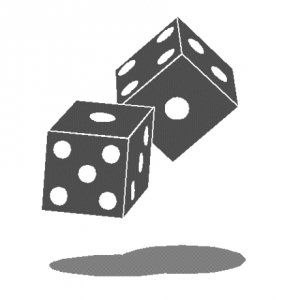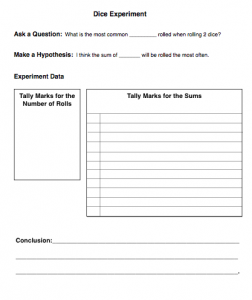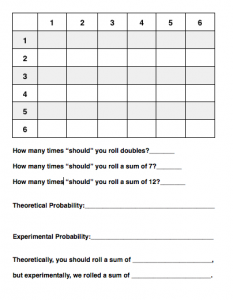What is the probability of rolling of sum of 7 when rolling 2 dice?
One of my favorite things to do is take a math concept I used to teach my middle school students and see how various younger age groups handle it. More often than not, the instruction can be adjusted so that even the youngest students can learn what some might think is a difficult concept. One of those concepts is probability.
I created a “Dice Experiment” worksheet and conducted it with students in grades 1-6. Kids often associate experiments with science, so it was fun to do a math experiment. We rolled the dice 36 times and recorded the sum. With some groups I gave pairs of students the dice to roll on their own. With other groups, we collected the data as a class.
I loved telling kids that I used to teach this concept to middle school kids. Their faces lit up because they knew they were learning “big kid” math. 🙂
Here is a screenshot of the the experiment worksheet.
With all age groups, we talked about the parts of an experiment and how it’s important to keep track of data. We also talked about tables and charts and how they keep information organized and easy to read. We also talked about patterns and how they’re easier to see when the data is organized. We made lots of predictions and of course, talked about probability. Below you will find a link to a blank copy of the experiment along with an answer key. Feel free to use it and/or tweak it.
Please leave a comment and tell me how you teach probability. Or, give an example of how probability is used in everyday life.
Dice image taken from http://www.pdclipart.org


